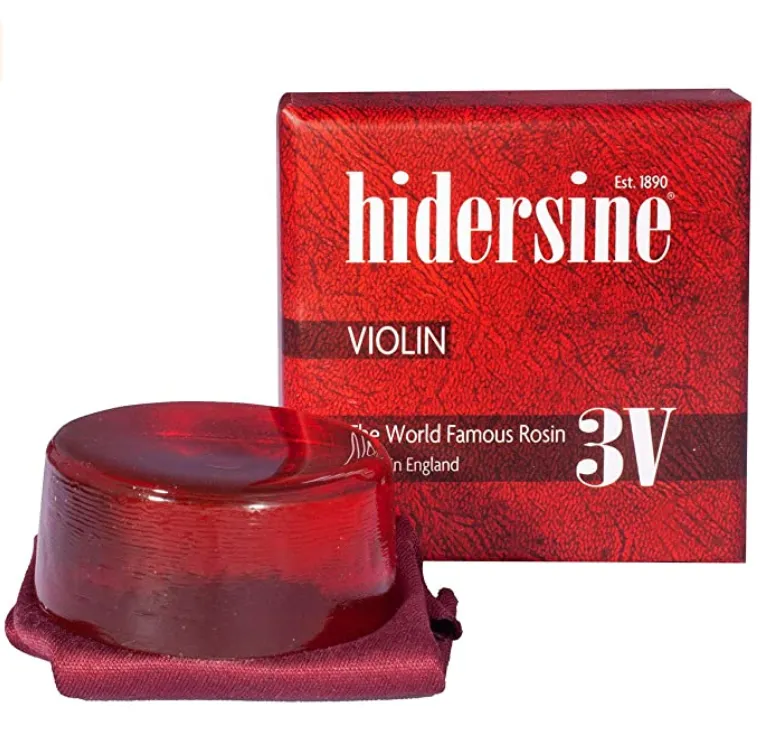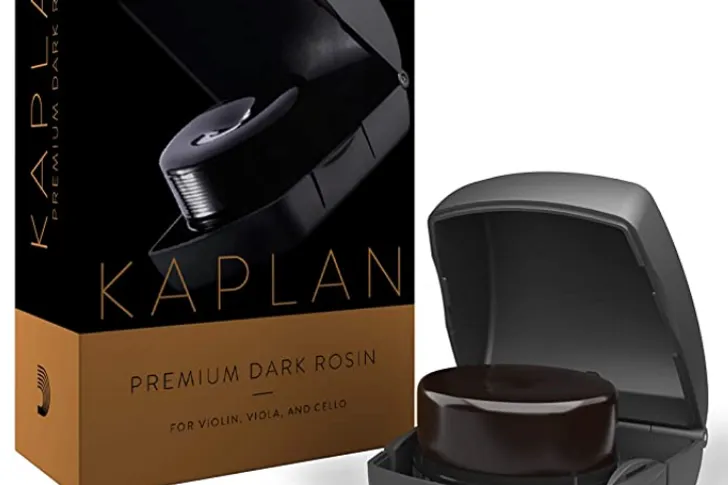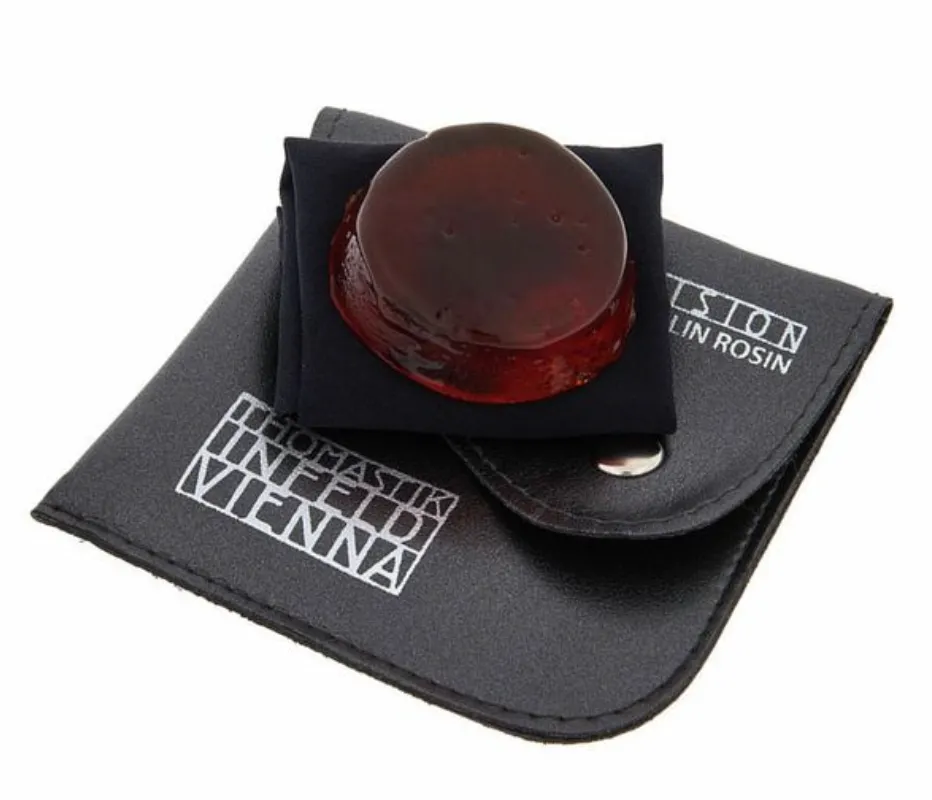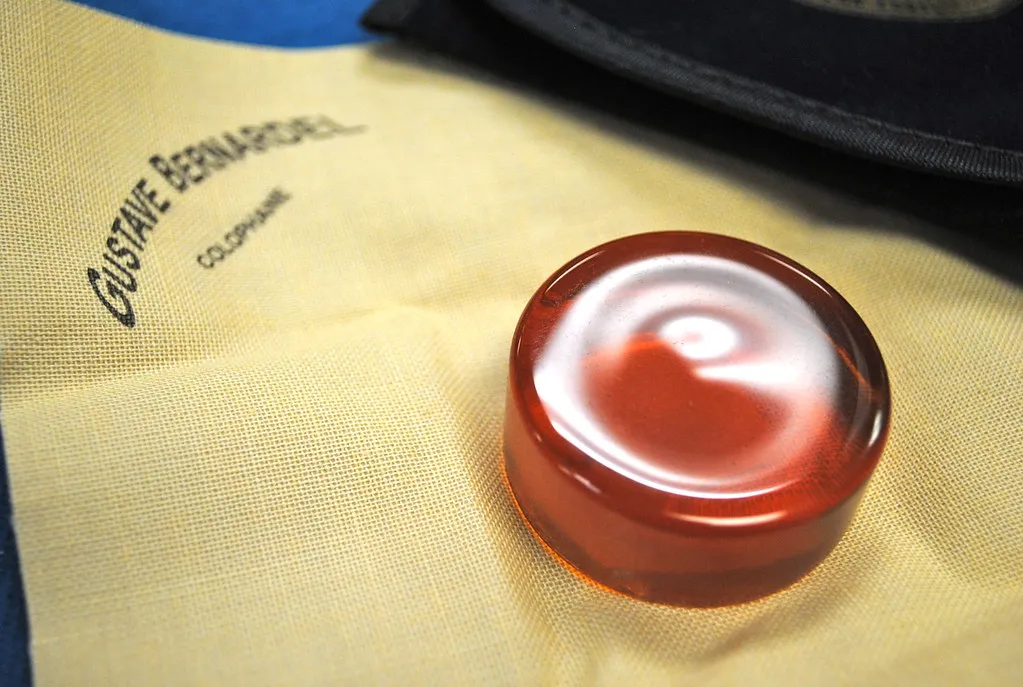You might be familiar with it as a concept, having seen a strange substance in violinist's cases. But what actually is rosin – and why do violinists need it? We're here to answer all your questions about rosin and why it's important for violin bows.
What is rosin and what is it made of?
Rosin is a solid form of resin – a sticky substance similar to sap that comes from pine trees. In order to make rosin, fresh liquid resin is heated until it solidifies. Semi-transparent and brittle, rosin varies in colour from pale yellow to black, and is used by string players to add friction to the bow hair so that it grips the strings and allows them to ‘speak’.
Find out more about the history of the violin here.
Why do violinists need rosin?
Without rosin, there is little to no adhesion between the bow hair and the string – the bow will slide across the strings without enough friction to produce any sound
How do you apply rosin to the violin bow?
The player should ruub the rosin onto the bow hair to achieve an even coat. As you apply it, the hard rosin cake becomes a white powder which bonds to the bow hair and creates friction between the hair and the string when the instrument is played.
Players must be careful not to apply too much or too little rosin. Too much will produce clouds of rosin dust with each bow stroke, while too little won’t provide the necessary adhesion to produce a clear sound.
What’s the difference between violin, viola, cello and double bass rosin?
Generally, the larger the instrument, the softer the rosin should be. The thicker strings of cellos and double basses require a more pliable, sticky substance, so darker, softer rosins are used. Violinists and violists, meanwhile, tend to use a lighter, harder rosin for their instruments. However, climate also plays a part. Darker rosins do better in cool, dry climates as they are too sticky for humid environments.
Is it poisonous to humans?
You probably shouldn't eat rosin (and we're not sure why you'd want to anyway, to be honest), but there is little evidence to show that it is toxic or would do your body much harm. However, it is highly flammable, so keep it away from flames.
What are the best rosins on the market?
There are a great array of rosins on the market, ranging from cheaper boxed versions for students to expensive caked brands for professionals. Student-grade rosin is generally grittier and may not produce such a smooth and even tone. The more expensive rosins may incorporate precious metals, such as gold, silver and copper.
Best rosin brands:
Hidersine 3V World Famous Rosin

One of a number of Hidersine blends for different instruments and string types, the British company’s 3V is a light, amber rosin for violinists. Its harder consistency is designed to produce a bright sound with a crisp attack. It also provides a good level of traction between the bow hair and string. For a darker and softer version, try Hidersine’s Duluxe Violin 6V.
Both blends represent value for money, retailing at under £10. For those wanting something a little more sophisticated, Hidersine also produces a premium rosin, Reserve21. Its recipe features ‘WW-grade Brazilian resins and British beeswax’ and which retails for just under £20.
D'Addario Kaplan Premium Rosin – Dark and Light blends

Appropriate for violin, viola and cello , D’Addario’s Kaplan Premium rosin is billed as ‘a high-quality formula that delivers a clean, low-dust application’. Housed in a jewel case for easy accessibility, the rosin cake within can be rotated for even distribution onto the bow hair. Manufactured in the US, the rosin is available in a light and dark formulas producing less and more grip respectively. Priced at just over the £10 mark, it’s a robust choice for students and busy professionals.
Pirastro Evah Pirazzi Gold Rosin

Designed specifically to complement Pirastro’s Evah Pirazzi Gold strings, this light rosin claims to produce an ease of response in softer dynamics, and equally to allow the strings to ‘sound’ evenly in faster passages. The manufacturer aims for an even, smooth and supple sound in all circumstances avoiding harshness of tone. Says Pirastro: ‘The Evah Pirazzi Gold rosin distinguishes itself by creating only a minor formation of dust with no residue forming on the bow hair or the string's point of contact.’ Priced at over £25, this rosin may seem on the pricier side, but there are definitely more expensive brands!
Thomastik Vision Violin Rosin

Founded over 100 years ago, Thomastik-Infeld has become a respected name in the world of strings. The firm also produces several rosins specifically formulated for its string lines, in varying degrees of hardness to suit different instruments, playing styles and climates. While all Thomastik rosins are designed ‘to enable the bow to grip the string without sounding rough or coarse’, the Vision blend ‘grips the string well’, produces ‘minor formation of dust’, and is good in ‘cool, dry climates and during winter’, according to the company. Priced around the £20 mark, this rosin is intended as a practical all-rounder for professionals.
Buy from thomann.de/

